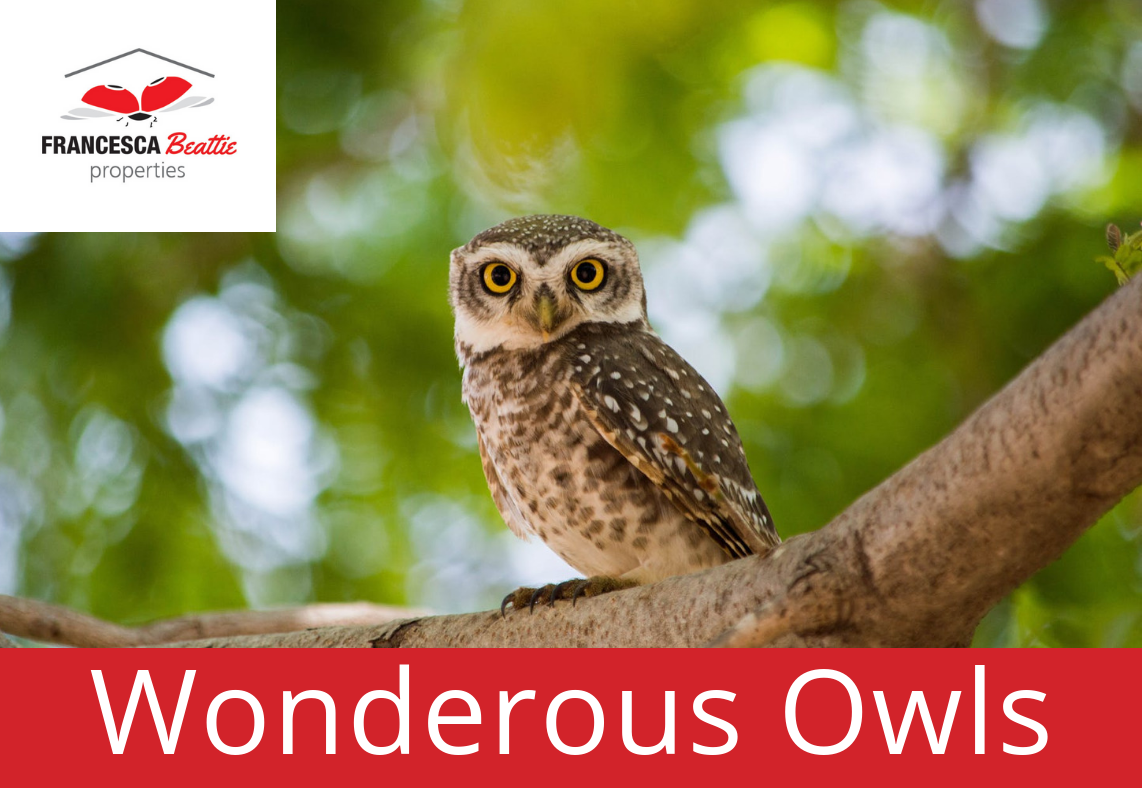
There are now over 100 occupied owl boxes within Gauteng. EcoSolutions’ install, service and prepare Spotted Eagle Owl boxes ready for their breeding between July and November. These boxes are made of recycled wood, prepared with the natural nesting material owls prefer, are bee protected and installed in gardens, estates, office parks, farms from Pretoria to Van Der Bijl Park, Krugersdorp to Midrand, Kempton Park to Alberton and Benoni. (EcoSolutions also undertakes installations throughout the country.)
There are 216 species of Owls worldwide, the largest is found in Europe and Asia with a wing span of 180 cm to the smallest Elf Owl in Mexico, which stands just 15 cm in height, who feeds on insects. In our area in Fourways Gardens the most prevalent owls are Barn Owls and Spotted Eagle Owls.
Barn owls are the ratters and move in to dark cavities where there is a high rat population. A pair of owls will produce a clutch of between 4 to 15 eggs – the availability of food dictates the number of eggs the female will lay. From egg to an adult owl, it takes 35 days. Juveniles are big eaters and have fast metabolic rate, eating double the amount that their parents consume. In the nest, the male hunts for the owlets, himself and the female eats last. Recent studies show owlets who call the loudest are the hungriest and the other owlets will fall silent if there are other owlets in the clutch that are hungrier than themselves. The barn owl is nocturnal, with excellent eyesight in low light. They use their ears to hunt. One ear is bigger and higher than the other, so covering areas of flight high and low on the hunt.
Owls have specially adapted ‘comb-like’ features on their primary flight feathers specifically designed for silent flight, in order to avoid noise interference during hunting. Compared to the rest of Johannesburg, Alexandra Township attracts more Barn owls due to the higher rat population there.
Spotted Eagle Owls nest on the ground in rocky outcrops or in cavities and boxes with gravel as their nesting medium. They will produce 2 to 4 eggs and their breeding season is triggered by lengthening of the days from June to December. They hunt rats and insects. These are the most prevalent owls in our area in Fourways, with our own Owl boxes being introduced by EcoSolutions some years ago. Owls’ territory varies, depending on food supply. They will travel from 400m to 4 kms in search of prey.
Rat poisoning does not work as an eco-friendly control method and it has a guaranteed 100% secondary poisoning problem. There is no owl friendly rat poison.
EcoSolutions offer a rat trap poison-free service which is a humane option to control rats. They will gladly respond to requests to install and service owl boxes and can be contacted on 072 365 9777 or info@ecosolutions.co.za.
Owlproject.org has over 200 schools in Gauteng involved in owl conservation projects and have educated over 200 000 children. The traditional negative attitude toward owls is being changed through education and these amazing art projects where Owl totems poles and colourful masks have been created through the Annual Art Project in township schools to raise funds to create more owl friendly children. Owls eat rats.
Owlproject.org are always looking for sponsorship for the wonderful, nature conserving and educational work that they do in township schools. Please visit Owlproject.org’s website and Facebook page or contact them on 076 360 9072 or info@owlproject.org.
By Francesca Beattie and Sara Orchardson